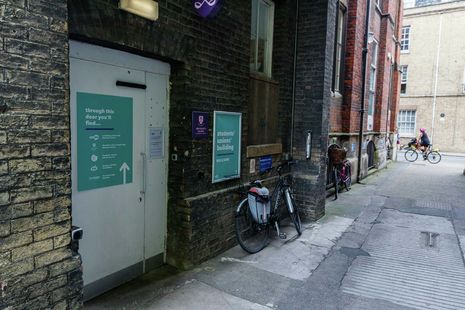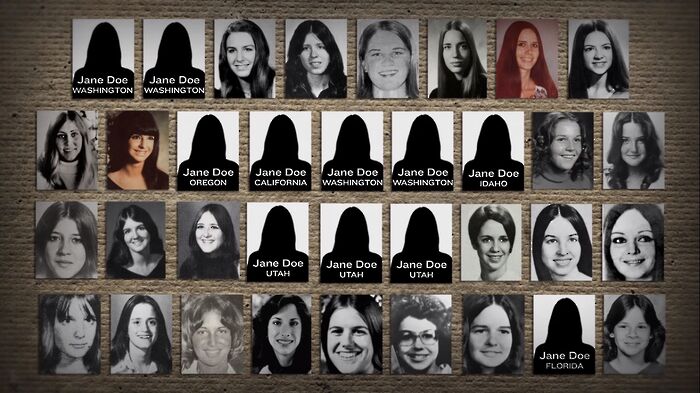The Womcam executive must include a class representative
Class background colours many women and non-binary students’ experiences at Cambridge. Womcam must adequately provide for this, writes Belle George

Cries of “women, united, will never be defeated!” echoed from the protestors in the Reclaim the Night March at the end of Lent term. The march in Cambridge is organised annually by the CUSU Women’s Campaign (Womcam) which operates to “support and represent all women and non-binary students at Cambridge”, asserting itself as “the main representative body for women in the University”.
With the upcoming election of a new executive committee in Easter Term, Womcam is faced with an opportunity to make meaningful change with the addition of a representative for working class female and non-binary students. Currently, the lack of class representative is symptomatic of the marginalisation of working class students in Cambridge, an institution long dominated by students from privileged backgrounds. This opportunity for change should not be passed over.
Seven of the roles on the Womcam Executive Committee are ‘representational officers’. These represent LGBT, trans, disabled, graduate, international and BME students of marginalised genders on Womcam, yet there is a gaping hole for a dedicated representational officer for those from working class backgrounds. This lack of representation is not limited to Womcam – JCR and MCR committees, despite reserving positions for other marginalised groups, lack class reps. This often leaves the representation of working class students to access officers.
“An intersectional perspective highlights the danger of women’s issues being appropriated by middle and upper class women”
Representation has improved recently – in Michaelmas, CUSU voted to adopt Class Act as an official liberation campaign, a significant step for the representation of self-identifying working class students at Cambridge. But while the Class Act liberation campaign has a Women’s Officer, Womcam does not have a reciprocal role for the representation of working class female and non-binary students in Cambridge.
Women and working class students have been traditionally underrepresented at Cambridge. In 1970 only 13% of undergraduate Cambridge students were female. Similarly, in 1961 only 27% of all students at Cambridge had attended a state grammar school – the only type of maintained school to send pupils to university at the time. Statistically, the situation has improved: in the 2017 admissions cycle, 48% of accepted students were female and 64% were from state schools, meaning that in total 23.68% of accepted students were female and state-educated.
However, breaking down this figure further reveals that Cambridge still has a long way to go in terms of representation of working class women at our University. Of the 1,292 female Home students accepted to Cambridge in 2017, only 528 attended comprehensive schools, sixth form colleges, or further education and tertiary colleges. 422 came from independent schools and 205 from grammar schools. With only around 232 grammar schools across the UK, this is not particularly representative.
It’s obvious that there is room for improvement in terms of access for working class students applying to Cambridge, but access should not stop at admission. A representative on Womcam would be an integral way to continue access efforts for working class female and non-binary students to be represented and supported throughout their degrees.
Nationally, working class women have also been largely invisible from the history of feminism. Cambridge is not an exception – looking at figures like Millicent Fawcett who were central in the push for getting women accepted to the University (as well as part of the wider movement for female suffrage), one sees a history of women who are predominantly white and middle class.
“There is a crucial need for an understanding of how class background changes female students’ experiences of university”
Developments in feminist theory and practice over the last few decades mean we can look back on Cambridge’s early feminists with a critical eye, while still appreciating the passion and commitment they showed in the fight for gender equality. An intersectional perspective highlights the danger of women’s issues being appropriated by middle and upper class women who risk ignoring or tokenizing the issues which disproportionately affect working class women. Feminism at our University must not be alienating to working class students. Just as other groups of marginalised female and non-binary students including those who identify as BME, LGBT+ and disabled merit their own representative on Womcam, so do those from working class backgrounds.
A recent Varsity article drew attention to the disproportionately high rents paid by students at Newnham, Murray Edwards and Lucy Cavendish, Cambridge’s three female-only colleges. The burden of high rents has more of an impact on lower income students at these colleges than their more privileged counterparts, demonstrating the crucial need for an understanding of how class background changes female students’ experiences of university.
However, concern about high rent is only one of the numerous factors that impact the lives of working class female students in Cambridge. When considering the burdens faced by lower income students, issues pertaining to money are often the first to spring to mind. However, this is a simplistic understanding of class, blind to the cultural and social factors that are inextricable from people’s lived experiences. To fail to see this is to obscure the daily effects of institutionalised sexism and elitism shouldered by working class female students. Coming to Cambridge from an all-girls private school where feminism and empowerment were valued and ingrained in students is a vastly different experience to that of many female students from less privileged backgrounds.
Suffice to say, experiences of social class at Cambridge are influenced by far more than just bank balance. Uncomfortable experiences grow not only from a disparity of wealth with peers but also from a disparity of cultural capital. The elitism inherent to Cambridge, an institution with a long standing history as a wealthy enclave, is perpetuated in attitudes which position working class culture as somehow inferior. Womcam must actively work to counter the feelings of exclusion and discomfort that stem from working class students’ encounters with these pervasive attitudes by providing an essential network of solidarity and support.
One anonymous opinion from a recent survey conducted by the women’s officer on the Class Act campaign captured the need for a class representative on Womcam in a nutshell, saying that this officer “would prioritise representation of students who come from a nontraditional background, ensuring they are a part of a conversation which includes and values their experiences”.
The unique nature of the struggles faced by working class women merit a representative for them on Womcam. Next term’s executive committee elections will no doubt demonstrate students’ passion for continuing the tradition of dismantling the structures and countering the practices which continue to inhibit the experiences of female and non-binary Cambridge students. Channelling part of this passion towards bettering the experiences of current and future working class students through the creation of a class representative role must be a priority.
 News / Eight Cambridge researchers awarded €17m in ERC research grants27 December 2025
News / Eight Cambridge researchers awarded €17m in ERC research grants27 December 2025 News / Clare Hall spent over £500k opposing busway 24 December 2025
News / Clare Hall spent over £500k opposing busway 24 December 2025 Comment / League tables do more harm than good26 December 2025
Comment / League tables do more harm than good26 December 2025 Comment / The ‘class’ of Cambridge24 December 2025
Comment / The ‘class’ of Cambridge24 December 2025 News / Caius mourns its tree-mendous loss23 December 2025
News / Caius mourns its tree-mendous loss23 December 2025









